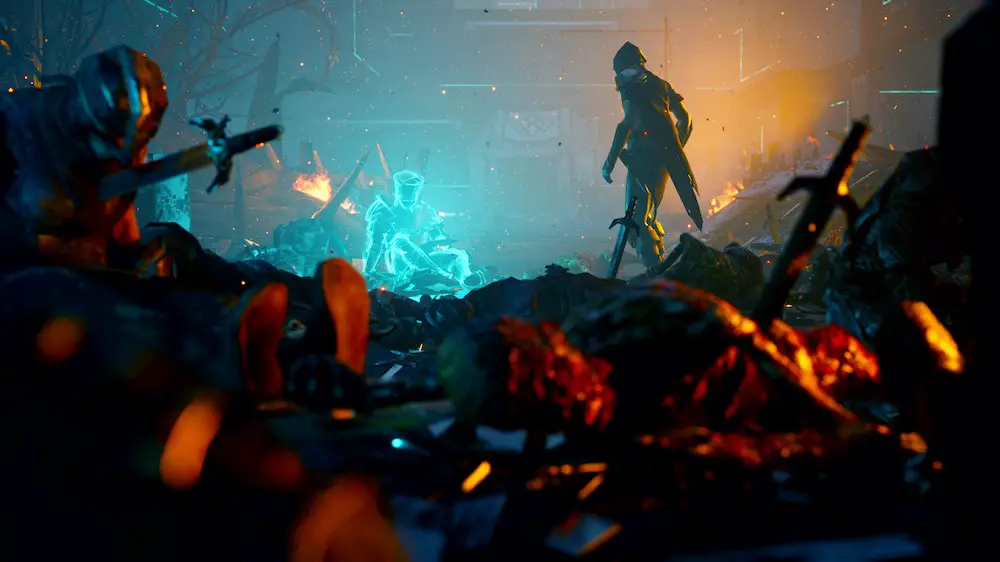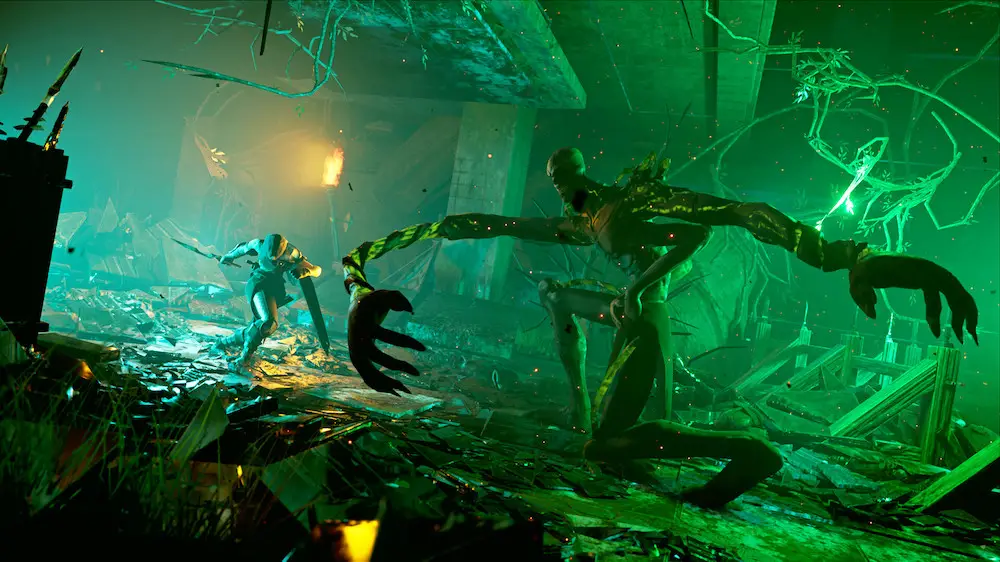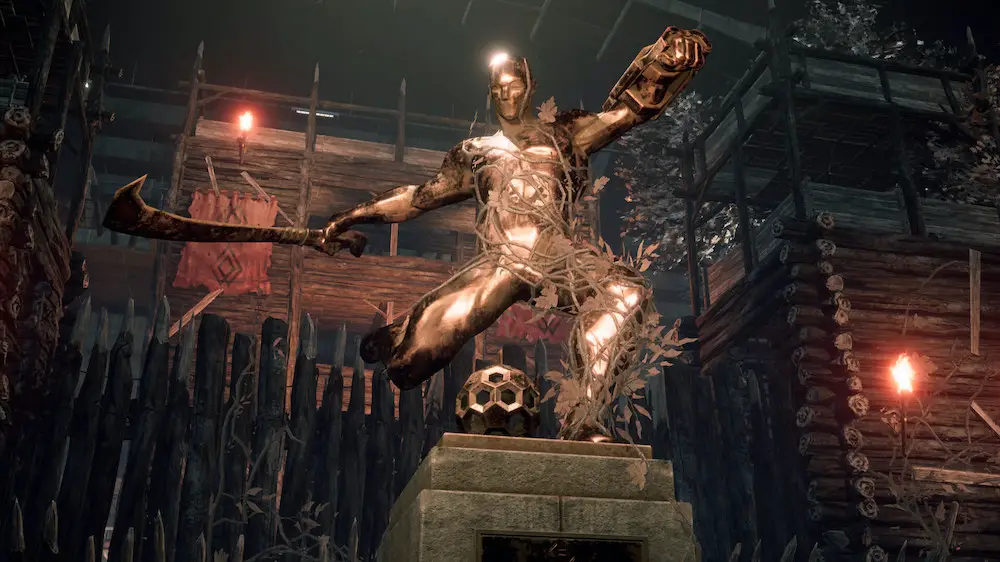![Deathbound preview [PAX] – Boundless promise](/content/images/size/w1200/2025/02/ss_e0c74259b9f0fb57518813fd48b30c176010d36c-1920x1080-jpg.webp)
It is quite hard to differentiate from the crowded “punishingly difficult third-person action RPG” genre, but Deathbound manages to do so in strides. Striking a great balance between familiarity and novelty, Deathbound proves that it doesn’t take a reinvention of the genre to be good – just confident game design that isn’t afraid to shake things up.
I was able to play a good amount of the game on PC recently at PAX East and spoke with the development team. Deathbound is a third-person soulslike ARPG developed by Trialforge studio. When I asked the team at PAX where they got their inspiration from, their answer was pretty obvious: they claimed to have played (and studied) all things soulslike, from the timeless FromSoft portfolio to games like Lords of the Fallen and Nioh 2. However, to my surprise, they also mentioned toying with game systems from fighters like Street Fighter and Tekken, which I can confirm after interacting with some meter-based combos. Marrying systems from these genres seems absurd, but it really does seem to work in this title. At first they had my interest – but now, after playing a little bit of Deathbound and speaking with the team, they have my attention.
The elevator pitch for Deathbound goes something like this: a third-person action RPG with gradually increasing difficulty centered around swapping characters in the middle of a fight. That’s right, Deathbound is not about shuttling one custom character through an arduous adventure, but instead, leveling multiple premade characters at once that share one corporeal form. Deathbound features what is called “binding”, or the act of absorbing the bodies and powers of fallen warriors throughout Ziêminal, the game’s fictional world. Through binding, you are able to utilize, level, and customize a diverse roster of warriors from two opposing factions.
When asked how many different characters will be available at launch, the developers told me “seven or eight”. Each character has unique abilities and weapons, similar to most RPGs in this vein. From what I experienced, there is a magic-based mage character, a sword-and-board knight, a blade-wielding rogue, and a hammer swinging brute. These archetypes aren’t exactly groundbreaking, no – but their synergy absolutely is.
At first you may be thinking hold on, this sounds very similar to Mortal Shell. While you’re not wrong, there’s an important distinction between the two. In Deathbound, you are able to swap characters (or Essences as they’re called here) whenever and wherever you want. You can swap while exploring, puzzle solving, before speaking with NPCs, heck, even in the middle of combat. You can quite literally start a combo with one Essence, swap (which takes like half a second), and finish it with another. The sheer amount of possibilities this system opens up in terms of individual combat expression is nothing short of vast, not to mention the astronomical skill ceiling for advanced players. I know a good hook when I see it. And this right here is a good hook.
The story of Deathbound also plays directly into the binding system. The game takes place in a setting that was described by the team to me as “low sci-fi”. In its most basic form, the realm of Ziêminal is a sleek, semi-futuristic setting with heavy fantasy influences. At some point in the past, Ziêminal was a thriving world of scientific marvel and faith-based harmony. After a cataclysmic conflict, the remaining inhabitants split into two factions: the Church of Death and the Cult of Life.
Many of the NPCs and all of the Essences you encounter are affiliated with one of the two groups. Because of this, each equipped Essence has a unique synergy with one another. If you have a hardcore Cult of Life Essence in use alongside a diehard Church of Death enjoyer, the team’s stats will be directly influenced either for better or for worse. Therefore it is beneficial to understand exactly who you are pairing up and exploiting their relationships to maximize your combat efficiency. Additionally, NPCs will react to your character’s faction as well. At one point, two Church of Death guards welcomed me for a chat while I was playing as a high ranking Essence in their faction. The moment I swapped to a Cult of Life character, they attacked me. This concept is honestly brimming with potential.
The gameplay loop of Deathbound is admittedly pretty standard for a game in its genre, being mostly concerned with fighting and exploring. This is not an open world. There are no zones and there is no sprawling world map. It is very linear, but that is not necessarily a bad thing, since the spaces are intricately detailed and feature some light puzzles and environmental hazards. The few spaces I was able to explore were peppered with low level trash mobs and a few elite enemies with larger health pools. I was able to pick up a few items, try some consumables, speak to a few characters, and beat up a few different types of bad guys. This was towards the beginning of the game, around the second section from what I was told. At the end of the demo, there is a boss fight. You can probably guess how that went, picking up a soulslike and trying to learn gameplay systems and enemy attack patterns on the fly. I didn’t get a ton of time to study the item pickups or weapons I grabbed during my playtime, but one can guess they provide enough variety to be enjoyable.
It is only fair to note a few gripes I had with the PAX East demo, however. To start, I found the combat spaces very, very claustrophobic. I know I mentioned that the linear design is generally not an issue; when you’re in the middle of an arena getting stuck on geometry while being hounded by a six-armed demon, it most certainly is an issue. I also didn’t find the sound design or soundtrack particularly interesting. Weapons and movements felt a little flat, almost as if you could visualize the sound department creating the sounds right in front of you. I wasn’t totally immersed by them, and nothing in the score stood out either. Of course, these things could change by the time of release. The voice acting was quite good though.
According to the development team, a release date has not been announced, though they are considering the second half of 2024 at the earliest for PC, and consoles at a later date.
I’ve played a few soulslikes in my day, but few stand out like Deathbound. The unique binding system has me eagerly anticipating release. If you enjoy soulslike games, or just challenging ARPGs in general, you should have Deathbound on your radar.




